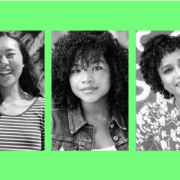12 multiracial people discuss the messy, complicated conversations they’re having about identity in this political moment.
— SAKSHI VENKATRAMAN+ P.R. LOCKHART, NBC NEWS
With nationwide protests against police brutality, rising incidents of anti-Asian racism and the selection of Sen. Kamala Harris as the Democratic vice presidential nominee, race relations within and between the Asian American and Black communities have quickly shifted into focus.
Conversations surrounding these groups, their subgroups and how they relate to one another have been messy and complicated. As the Black Lives Matter movement gained traction this summer, communities challenged the model minority myth, colonialism and colorism to explain how the histories of both Black and Asian communities have shaped how they interact today. Young Asian Americans encouraged one another to confront the anti-Blackness in their own families and communities. And Harris’ nomination and the subsequent attempts to categorize her raised a question that multiracial people across the U.S. have lived the answer to: What does it mean to be both?
— Credits
Featured Image, Left to right, Mariko Fujimoto Rooks, Laya DeLeon Hayes and Jenn Noble.NBC News
Full article @ NBC News
— Related
Black Lives Matter (BLM) is a decentralized political and social movement advocating for non-violent civil disobedience in protest against incidents of police brutality and all racially motivated violence against black people. The broader movement and its related organizations typically advocate against police violence towards black people, as well as for various other policy changes considered to be related to black liberation.
In July 2013, the movement began with the use of the hashtag #BlackLivesMatter on social media after the acquittal of George Zimmerman in the shooting death of African-American teen Trayvon Martin 17 months earlier, in February 2012. The movement became nationally recognized for street demonstrations following the 2014 deaths of two African Americans: Michael Brown—resulting in protests and unrest in Ferguson, Missouri, a city near St. Louis—and Eric Garner in New York City. Since the Ferguson protests, participants in the movement have demonstrated against the deaths of numerous other African Americans by police actions or while in police custody. In the summer of 2015, Black Lives Matter activists became involved in the 2016 United States presidential election. The originators of the hashtag and call to action, Alicia Garza, Patrisse Cullors, and Opal Tometi, expanded their project into a national network of over 30 local chapters between 2014 and 2016. The overall Black Lives Matter movement is a decentralized network of activists with no formal hierarchy.
Source – Black Lives Matter (Updated: 15 October 2020) Wikipedia. Available at https://en.wikipedia.org/wiki/Black_Lives_Matter, (Accessed: 18 October 2020)

